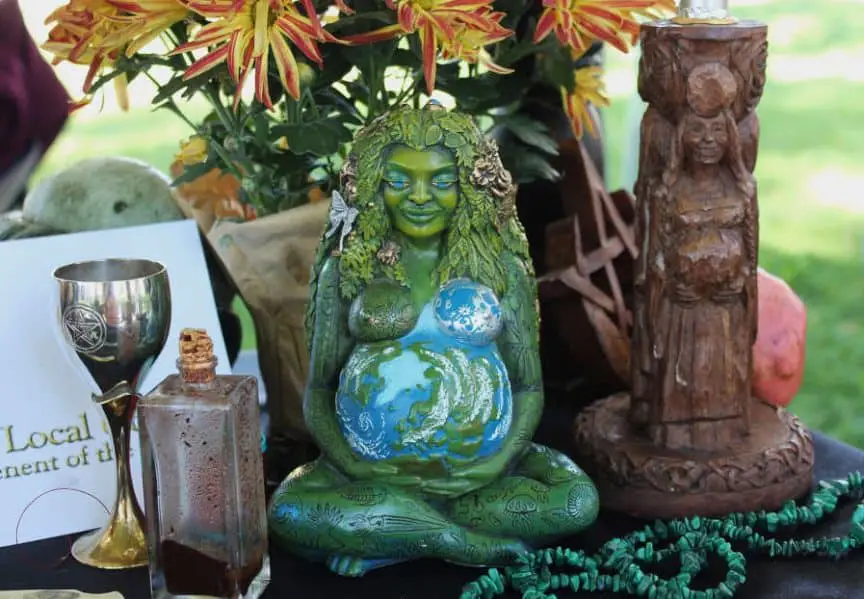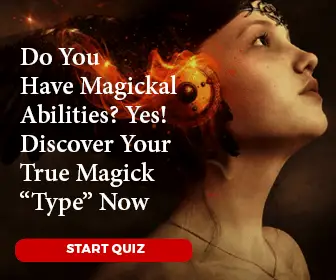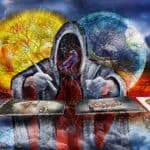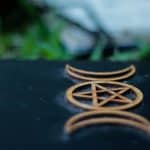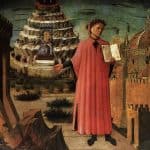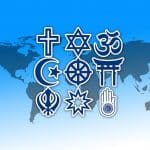Wicca religion traces its origin from ancient witchcraft cults and pagan practices going as far back as before Christianity. It is a neopagan religion present in many countries, especially English-speaking ones.
It rose in public prominence in the late 1950s when witchcraft became legal in England, and the growth was further boosted with the legalization of witchcraft in the 1960s.
Central to the Wiccan belief is the idea that as long as whatever one does not cause harm to others, then they are free to live and do as they desire. Their practices are nature-oriented, and most believe in the form of both a god and a goddess.
There are many branches of Wicca, most starting from the traditions and form of the religion established by Gerald Gardner. Practices differ across the different branches, but there are many similarities. Herein is a look at the main branches of Wicca prominent in modern times.
Gardnerian Wicca
Gardnerian Wicca gets its name from its founder and one of the earliest figures who publicized the religion, Gerald Gardner. He was a British civil servant, and many consider him the ‘Father of Wicca.’
After the legalization of witchcraft, he came out claiming he was an initiate of the religion and that the religion in practice dated back to the old witch cult from pagan Europe before Christianity.
He is responsible for not only publicizing and spreading Wicca during the early years but also establishing much of the forms, structures, and traditions that have been adopted by most Wiccan practices. He also initiated some of the early leaders of the Modern Wicca movement, including Doreen Valiente and Alex Sanders.

Together with Doreen, he structured and reshaped the covens and the practice. He strongly believed that the occult witchcraft he practiced in England was a remnant of the ancient practice which revolved around earth worship.
Gardnerian Wicca is strong on structure and follows a traditional and strict hierarchical grade. Initiation is a must to gain membership, and they still adhere to oaths of secrecy.
This branch of Wicca believes in a god and Goddess who are equally balanced and has strong ties to nature and have many rituals as a central part of their practice.
Gardnerian Wicca also observes eight sabbats and esbats. It has sexual overtones in its practice, with members preferring to be nude during circle rituals. Gardnerian Wicca came to America in the early 1960s thanks in part to the efforts of Raymond Buckland.
Check out books by Gerald Gardner and other Wiccan books, here
Alexandrian Wicca
Alexandrian Wicca also gets its name from its founder Alex Sanders who, along with his wife Maxine, were its founders. It emerged in the 1960s from England.
The tradition shares plenty with Gardnerian Wicca. It is similar to its earlier sister in terms of the hierarchical structure and the need for initiations. However, it is more liberal and less strict with non-initiates ‘neophytes’ allowed to attend circles.
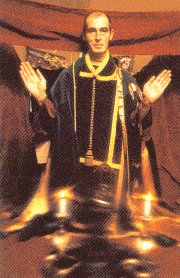
The main difference is the addition of ceremonial magic elements such as Qabalah, Enochian, and Angelic magic. The eclectic and liberal nature of Alexandrian Wicca means it is hard to find two covens with all similar practices, as is the case of Gardnerian Wicca. Covens tend to pick whatever works of them.
There is also a strong emphasis on training in Alexandrian Wicca, with neophytes having to complete a set of projects before their initiation to 1st degree.
With further training and development of skill, one rises in rank. Alexandrian Wicca covens meet during sabbats, new moons, and full moons, while some covens meet at least weekly.
Another difference with Gardnerian Wicca is the use of different tools and rituals in some sections. They also have different names for deities and their quarters’ guardians. These name differences range from cosmetic changes to fundamental differences with their Gardnerian counterparts.
Dianic Wicca
Dianic Wicca gets its name from the Roman Goddess of the moon, childbirth, and hunting, Diana, whose companion nymphs were all female.
The founder of this branch of Wicca was Zsuzsanna Budapest during the 1970s. She was a hereditary witch and said she based her new Wiccan tradition on the American feminist movement in the US and what she learned from the Hungary uprising of 1956.
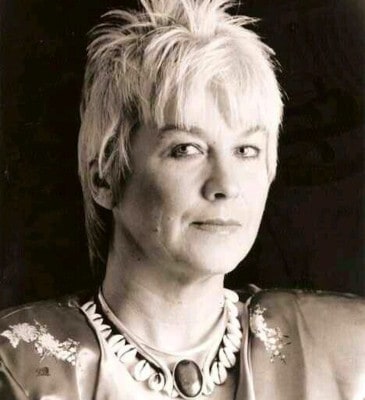
The feminist inspiration is evident in the fact that Zsuzsanna named her first coven the Susan B Anthony Coven. Another inspiration for this branch is Aradia, a book by Charles Leland (Aff.link) which records folk-magic rituals from Italy.
The main distinguishing aspect about Dianic Wicca is its feminist approach, specifically its worship of the Goddess as Whole unto Herself. She is the creator of all life, and all that exists is within her.
They worship different forms of the Goddess in her aspects as the Mother, Maiden, and Crone. Even where her male companion is present, he is only as a consort and not an equal.
There are several offshoots of Dianic Wicca, with the most notable ones being the Budapest lineage, the McFarland Dianic, and The Living Temple of Diana.
While they observe the mainstream coven traditions like other Wiccan branches, Dianic Wicca covens are in most cases strictly for women. Even where the males are welcome, their rituals and practices still aim to the empowering of womanhood and healing wounds from patriarchy.
The Budapest lineage of Dianic Wicca has no problems in the use of spells and hexing against those who would try to harm women. Also, while it is not a requirement of Dianic Wicca, most of its members are active in rights movements.
Check out books by Zsuzsanna Budapest and other Wiccan books, here
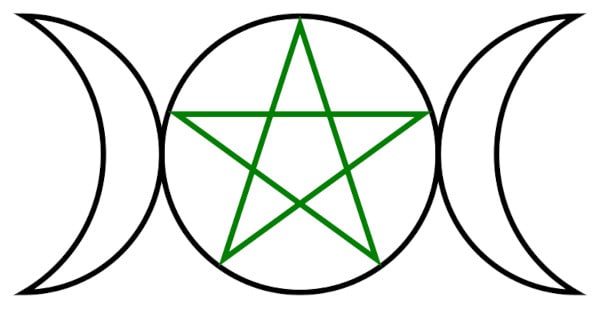
Wicca Diploma Course
- Certified Course
- Accredited Course
Course Information
- 10 Modules
- Lifetime Access
- Study Group Access
Use “LIGHTWARRIORSLEGION466 ” code for 70% off.
Celtic or Druidic Wicca
As the name suggests, Celtic Wicca is a modern Wicca practice that draws its influence from ancient Celtic pagan religion.
It is important to note that Celtic Wicca is not a reconstruction of Celtic religion but rather observing their influences within the structure of Wiccan practice. Mainstream Wicca does borrow several aspects from Celtic sources.
As such, Celtic Wicca is more about emphasizing these Celtic influences and adding more that suit the different covens while at the same time omitting Wiccan influences from non-Celtic sources.
As a result, there is a lot in common between traditional Celtic paganism and modern Celtic Wicca. However, there are clear differences between ancient paganism and Wiccan practice. First, Wiccan ethics, as the Wiccan Rede puts it, are ‘ An it harms none, do as ye will.’
This is different from Celtic traditions and ethics, which emphasize heroic mortality, tribal, and personal honor. Wicca places little emphasis on mythology and while using the four elements as a fundamental aspect contrary to Celtic religion.
Similarities include the use of symbols like the pentacle, the faery star, and deities, including an emphasis on nature, such as plants, fairies, herbs, and stones. There are several branches within it, including American Celtic Wicca, whose founder was Jessie Bell, Gavin and Yvonne Frost’s Church and School of Wicca, among others.
Norse Wicca
Like Celtic Wicca, Norse or Nordic Wicca looks to observe Norse worship beliefs within the Wiccan traditions. It is still a small practice compared to many other Wiccan traditions feel it does not reflect well with the Wiccan ethics and beliefs.
However, those who practice the religion agree it is not a reconstruction of ancient Scandinavian and Germanic religion. They simply emphasize the Norse roots in Wicca tradition and opt-out from other influences save for those shared across ancient religions like the pentagram symbols.
Therefore, Norse Wicca will still have common Wicca elements like the Wiccan Circle, the invocation of the Goddess and God, and celebrating the wheel of the year.
They even celebrate the sabbats and incorporate Norse holy days into the Year of the Wheel. For example, the merging of Brighid/Imbolc is often accompanied by a ritual dedicated to Baldur and Nanna.
All the Gods are one God while all goddesses. Nature is sacred, and they are connected to it through many practices and rituals. The sagas and Eddas are texts they pick their wisdom and inspiration from.
Norse Gods are viewed in a form or trinity balance in one of the interpretations of the law of the three in Wicca. The Aesir gods are seen as forceful preservers, the Rokkr Gods as evolutionary forces of nature, and the Vanir gods as being in the middle of the two extremes of stagnation and evolution.
Norse Wicca is also eclectic and liberal, and with various deities to pick from, people assign their patron or matron deity to the single points on the pentagram. Their personal High God is either Odin the All-Father for Norse Wiccans inclined to Aesir gods, Freyr for the Vanir oriented Wiccans or Loki for those inclined towards the Rokkr.
Seax Wicca
Raymond Buckland, who was born in England and once served as a high priest in Gardnerian Wicca, founded the Seax Wicca in 1973. By this time, he had moved to the United States in New Hampshire. Seax Wicca is inspired by Anglo-Saxon iconography and paganism. He also added Nordic elements to the practice.
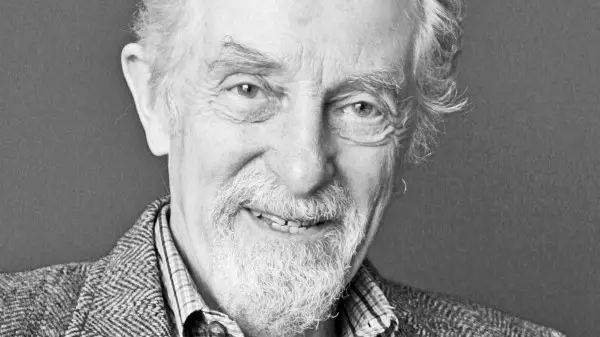
The Seax Wicca honors four principal deities, Woden, Thunor, Frig/Freya, and Tiw. These are taken to represent the Wiccan deities of the Horned God and Mother Goddess.
Nordic runes are also fundamental to the practice. The tradition has a minimalist approach to the use of tools, and their most significant one is the spear, which is unique to Seax Wicca. The spear commemorates the spear Odin used to hang on an Ash Tree to gain enlightenment.
Another significant difference with other Wiccan traditions is that the Seax Wicca is open for entry and does not have the secrecy oath. Raymond Buckland authored a book which he intended to be a guide on Seax Wicca.
The first book he wrote for readers already versed in the various aspects of witchcraft, while a second book he wrote gives instructions for any beginner, including how to start, self-initiate, and even consecrate the first tools.
Check out books by Raymond Buckland and other Wiccan books, here
The tradition is also democratic in nature, with coven members electing their officers and impeaching them as well. They have four officers, including a high priest, a high priestess, a scribe, and a thegn who is more of a guard and is responsible for the purity of the grounds and tools.
Faery Wicca
The Faery Wicca is also known as the fairie, fey, feri, fae, or fairy tradition. Victor and Cora Anderson were the founders of the tradition who, after reading Gerald Gardner’s Witchcraft Today book, became inspired to form their tradition.
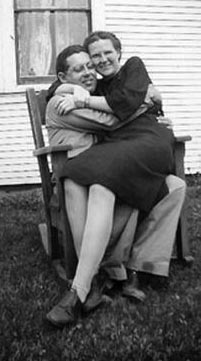
Victor Anderson was already practicing witchcraft after initiation by an African priestess into the Dahomean-Haitian Huna witch cult.
Victor Anderson has universal recognition as the Grand Master of the Fairy tradition. He added some of his early experiences into the fairy tradition. Later on, one of his famous initiates, Gwydion Pendderwen, added other elements he picked from the Alexandrian Book of Shadows. The tradition emerged in the late 1950s.
Faery Wicca recognizes The Divine Twins; Mother and son, brother, and lover as the creative forces in the world. Its Gods are real beings like humans, and it places emphasis on self-development, polytheism, theurgy, and practical magic. Sensual experiences and awareness, including sexual mysticism, are a significant part of the practice.
Check out books by Victor and Cora Anderson, and other Wiccan books, here
The tradition upholds secrecy and mystery, and its practices include direct communication with the divine and ecstasy. The tradition is gender-equal and accommodates all sexual orientations.
Eclectic Wicca
Eclectic Wicca is not a formal tradition with its own set of practices and structure. Instead, it is a description of Wiccans who do not have a single tradition or culture on which they base their practice.
Instead, such Wiccans pull from numerous and varied sources whatever material they value as useful to their lifestyle and practice.
It is a modern way to practice Wicca, and it has no definite boundaries. The individual sets the rules and uses material he or she feel most comfortable with.
Solitary Wicca
Solitary Wicca does not refer to a specific tradition but rather a preferred method of practicing Wicca. A solitary witch can practice any tradition or be eclectic.
The difference is the witch chooses to do it alone and not in a coven. One could be a solitary witch by choice or circumstances. It could be that there is no coven nearby or the witch benefits more by practicing.
Wicca alone
With more traditions, even the secret ones becoming public and the change in public perception about witchcraft, the religion has spread worldwide, giving rise to even more traditions.
Few covens and initiates can now trace their lineage directly to their traditions’ founders. Still, Wiccan is one of the ways many feel connected to their ancestry and heritage and nature.
Do you want to learn more about Wicca and Witchcraft? Check out our recommendations at “Wiccan Bookshelf”
Stay in Touch
 Join our newsletter by using the forms on this website or click here!
Join our newsletter by using the forms on this website or click here! Follow us on Google News
Follow us on Google News Follow us on Facebook
Follow us on Facebook
Featured Image by Amber Avalona from Pixabay

